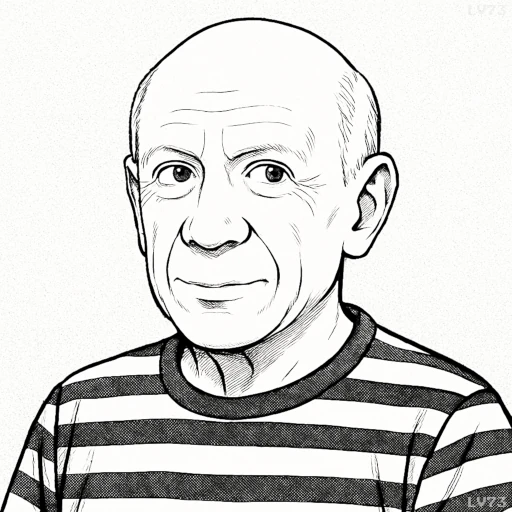“Some painters transform the sun into a yellow spot, others transform a yellow spot into the sun.”

- October 25, 1881 – April 8, 1973
- Born in Spain
- Painter, sculptor, printmaker
table of contents
Quote
“Some painters transform the sun into a yellow spot, others transform a yellow spot into the sun.”
Explanation
In this quote, Picasso contrasts two distinct approaches to art: one that simplifies and reduces the world to basic forms and another that elevates the simplest form into something more profound. The first type of painter, who transforms the sun into a yellow spot, represents a literal or realistic approach to painting, where objects are rendered as they appear to the eye. The second type of painter, who transforms a yellow spot into the sun, embraces a more abstract, symbolic approach, where simple shapes or colors are used to evoke deeper meanings and emotions. For Picasso, the latter approach reflects the power of artistic interpretation—the ability to go beyond mere representation and to transform something ordinary into something rich with significance.
This quote is especially relevant in the context of modern art, where artists have the freedom to move beyond realistic representation to explore new ways of seeing and expressing the world. In Picasso’s own work, especially in his Cubist phase, he did not simply replicate what he saw but instead broke down objects and reassembled them in new ways to evoke the essence of those objects. The yellow spot in his painting could be more than just color; it could represent the energy, emotion, or symbolism of the sun itself. This approach highlights the ability of art to transform our perceptions of the world, challenging us to look beyond surface appearances.
An example of this is seen in the work of modern abstract artists such as Wassily Kandinsky, who used geometric shapes and color to represent complex ideas and emotions. Similarly, contemporary artists like Mark Rothko use simple forms and colors to create profound emotional experiences, where a single color can become symbolic of a deeper truth. Picasso’s quote encourages us to recognize the power of interpretation in art, where even the simplest shapes and colors can hold immense meaning, and where the artist’s vision can turn the most basic elements into something that goes far beyond their immediate appearance.
Would you like to share your impressions or related stories about this quote in the comments section?



